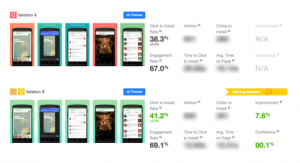 With the current market thriving, it’s quite amazing that just a few years ago we were in the midst of the “Great Recession.” Termed the “worst global recession since World War II,” our economy was in the tank, with unemployment figures soaring from 5% to 10% in just a 1-year span.
With the current market thriving, it’s quite amazing that just a few years ago we were in the midst of the “Great Recession.” Termed the “worst global recession since World War II,” our economy was in the tank, with unemployment figures soaring from 5% to 10% in just a 1-year span.
During this timeframe, nearly one in ten people in the United States was seeking employment. Even recruiters were looking for work. Companies weren’t hiring recruiters because there weren’t any open positions to recruit for.
Incredible how things change so quickly.
Now, just a short time after the “official” end to the great recession (late 2009), all of our clients tell us that getting help with talent acquisition is one of the top priorities for their business in 2015. Whether it’s hiring an outsourced recruiting company or in-house recruiters, it appears that the competition for talent is at its greatest peak since the Dot-com bubble in the late 1990s.
The market for recruiters has skyrocketed. A quick search on Recruiter.com shows over 35,000 posted positions with “Recruiter” in the title. In Illinois alone, Monster.com is advertising over 700 recruiter jobs.
Part of the reason demand for recruiters is so high is that when the economy went south, many recruiters were displaced into other industries and took occupations outside of recruiting. Recruiters left the industry in masses, which has now reduced the number of experienced recruiters available to hire.
So, what does it mean when there are fewer and fewer recruiters to help fill positions in staffing firms that need to find talent to grow? The answer for many companies is to start hiring and training fresh college graduates, or even hiring individuals from other industries just to get the recruiting headcount in house.
When you hire staff that you intend to keep, you create a downstream dilemma: How do you retain the best people who’ve invested in? Part of the challenge is the environment that you’ve created – making sure that your company has a great culture, rewards your recruiters fairly, and provides them with opportunity for growth. The other half is the feedback loop – making sure that you communicate regularly with them so that they understand where they fit, how they are performing, and where they can improve.
In our experience working with and consulting for IT Staffing companies, we find that many organizations miss the part about communication and the feedback loop. A new recruiter may be energized about their new job and works hard to meet goals and fit in, but many organizations don’t go the extra step to provide them regular feedback.
Or, if there is some kind of recruiter performance appraisal, it’s certainly not formal and is usually not very detailed. A recruiter performance appraisal like this typically results in vague future objectives like, “hire 10 more contractors this year to earn that next bonus level!” Unfortunately, these evaluations do more harm than good because recruiters aren’t given a direction for self-development.
In these scenarios, employees tend to leave because the grass is always greener on the other side: That other company where their friends took a new job is paying well, has better training, and gives more vacation time. You don’t want to be in a situation where your people are leaving and telling the rest of your staff how great it is elsewhere. This kind of turnover can leave a company scrambling to grow, always hiring to replace, instead of hiring to expand.
Because our goal at echogravity is to help staffing companies grow, we’ve pulled together our own version of the Recruiter Performance Appraisal. We’ve gathered information and spent time assessing the skills that recruiters should have in order to perform well in their roles.
This free download includes all the specifics needed to immediately print and use – details of the manager, long- and short-term goals, skill evaluation areas, and much more. Get your Recruiter Performance Appraisal copy here and be sure to let us know what you think.
(276)
Report Post







